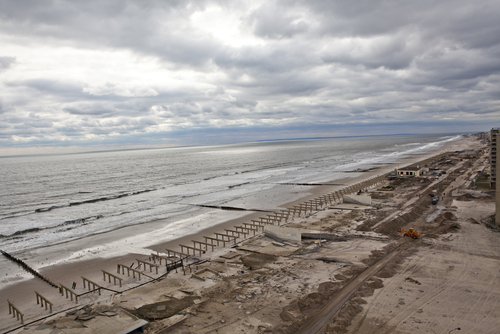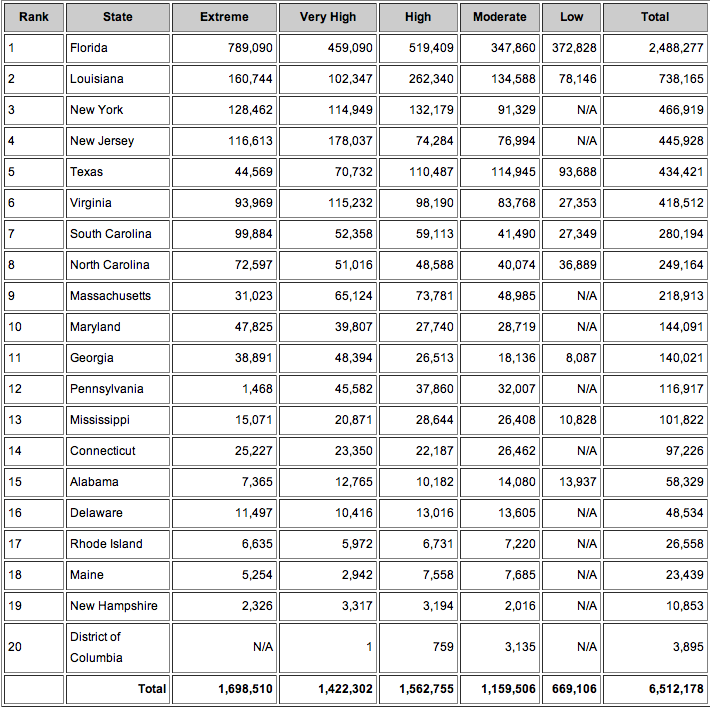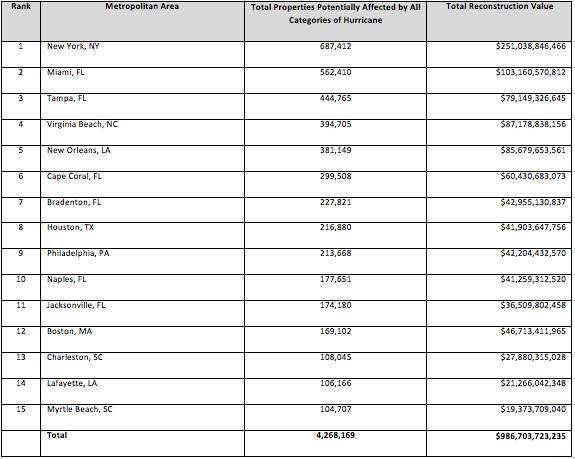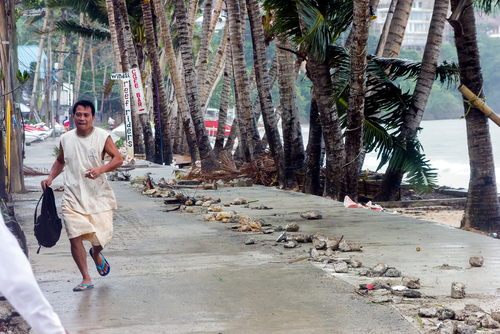A new study conducted by Texas A&M University at Galveston and the Texas General Land Office examines the 50-year impact of a major storm hitting Galveston Bay on the Texas coast near Houston, including secondary effects to the economy. The study focused on catastrophic “500-year” flood events (with a one-in-500 chance of occurring in a year), which, while rare, have hit the state 3 times in recent years. This includes Hurricane Harvey, which struck Louisiana and Texas in August 2017, causing $125 billion in damage, according to the National Hurricane Center.
These larger storms have serious economic impacts locally, regionally and nationally. Over a 50-year time frame, the study notes, “the projected economic impact on Texas’ Gross State Product (GSP) of storm surge without coastal protection is substantial.” In the wake of a 500-year magnitude event, the regional petroleum and chemical manufacturing sectors would see their output decline by 19% (or $175.4 billion) in lost revenue, as well as a projected 17% loss of petroleum jobs (approximately 155,000 jobs) and a petroleum price increase of 13%. It would also impact the region’s housing, with the sector declining by 8%, or $39.5 billion lost in sales.
A 500-year surge event striking Galveston Bay would also have serious impacts for national economic activity, especially because the region processes 25% of the petroleum and more than half of the jet fuel used in the United States. According to the study, U.S. GDP could drop 1.1% (approximately $883 billion), U.S. exports would suffer a 4% drop (approximately $1.66 billion) and “30 states not including Texas will have lower GSP in response to a surge event in Texas.”
“The Galveston Bay region is one of the most flood- and surge-prone areas in the United States with vast amounts of vulnerable residential, commercial, industrial and petro-chemical areas at risk,” said Texas Land Commissioner George P. Bush. “This study clearly demonstrates that, without any new protections in place, future storm surges could have substantial and lingering impacts on Texas’ economy and send lasting ripples through other economic sectors nationwide.”
Turning to mitigation, the authors of the report assessed the potential measure of a 17-foot “coastal spine,” also called a “coastal storm suppression system,” made up of “connecting seawalls and fortified dunes/levees along the coastline to retractable gates.” In October, the Army Corps of Engineers released the study Coastal Texas Protection and Restoration Feasibility Study proposing a similar example of this sort of structure—74 miles of barrier, including “floodwalls (inverted T-walls), floodgates (both highway and railroad floodgates), seawall improvements, drainage structures, pump stations, and surge barrier gates.”
The researchers estimate that a coastal spine would reduce the region’s lost petroleum and chemical manufacturing sector losses to 3% and 5%, respectively, a 1% reduction in regional unemployment, and a 1% increase in petroleum product prices. The report also claims that a coastal spine mitigation plan would reduce Houston-Galveston regional insurance premiums by as much as 28%. This could provide significant relief for insurers as well. Even though insurance and reinsurance only covered about 30% of the total wind and flood damage from Hurricane Harvey, this amounted to tens of millions in losses.
In terms of construction cost, the Texas researchers polled residents of three local counties and found that 56% “believed that both government and port industries should be responsible for financing the coastal barrier system,” and a majority agreed that some form of taxation should support its construction.




